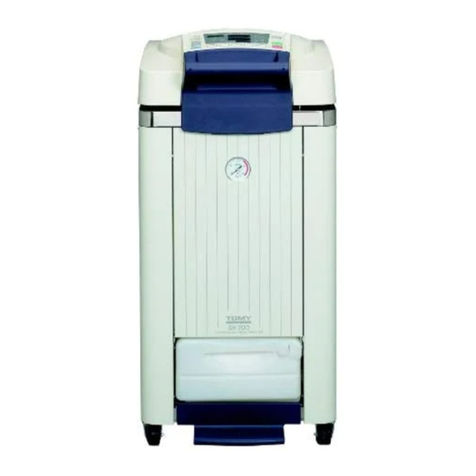
Do not modify or alter the instrument
or any parts of the instrument.
●Failure to do so may cause serious
accident or malfunction.
Do not use accessories or parts
other than those specified by the
manufacturer.
●Failure to do so may cause serious
accident or malfunction.
Do not touch the power plug with a wet
hand.
●
It may cause a serious or deadly electrical
shock.
Do not use any damaged power cord,
plug or loose outlet.
●
It may cause an accidental fire, short
circuit or malfunction.
When leaving the instrument out of use
for a long period of time, be sure to
remove the power plug from the wall
outlet for safety.
●
Failure to do so may allow insulation to
deteriorate, thereby causing an electrical
shock, short circuit or fire.
Do not install the instrument in facilities
that store chemicals which could
generate flammable gases or fumes.
●
Electrical components can corrode and
may cause a short circuit, electrical shock
or fire.
Be sure to use only the AC adapter that
comes provided with this product.
●
Failure to do so may cause a fire or
electrical shock.
Be sure to unplug the instrument before
performing maintenance procedures.
●
Failure to do so may cause a serious
electrical shock.
Do not use the instrument to centrifuge
explosive samples.
●
Failure to do so may cause fatal or
serious accidents. The instrument is not
an explosion-proof model.
Do not centrifuge explosive or flammable
materials or substances which could
react violently with one another.
Do not use the instrument to centrifuge
infectious samples.
●
Failure to do so may cause a serious hazard
to laboratory personnel. The instrument is
not a biohazard safety model.
If there is the need of handling any
potentially infectious or radioactive
samples, or other hazardous materials,
implement appropriate safety measures.
When returning the instrument or any
parts of the instrument for replacement or
repair, the instrument or the parts must be
appropriately decontaminated before
shipping it in any of the following cases:
1:In cases where the instrument or any
parts of the instrument has been
exposed to infectious and hazardous or
radioactive substances.
2:In cases where the instrument or any
parts of the instrument has any residue
of blood or other chemicals and has
been identified as hazardous.
When disposing or transferring the
instrumentor its parts, the instrument or the
parts must be appropriately decontaminated
before shipping it in any of the following cases:
1:In cases where the instrument or any
parts of the instrument has been
exposed to infectious and hazardous or
radioactive substances.
2:In cases where the instrument or any
parts of the instrument has any residue
of blood or other chemicals and has
been identified as hazardous.
1-2. Warnings and Cautions
3































